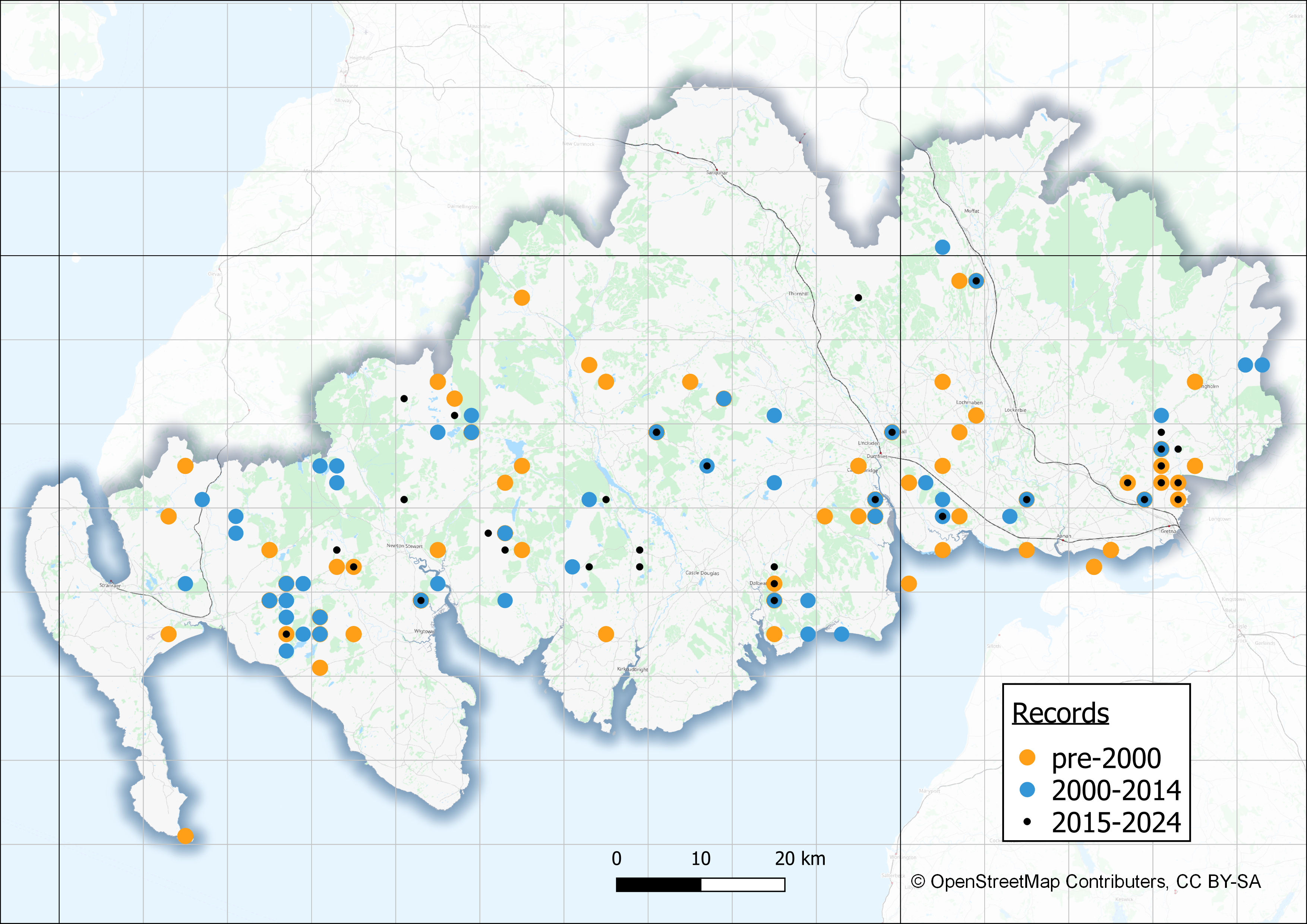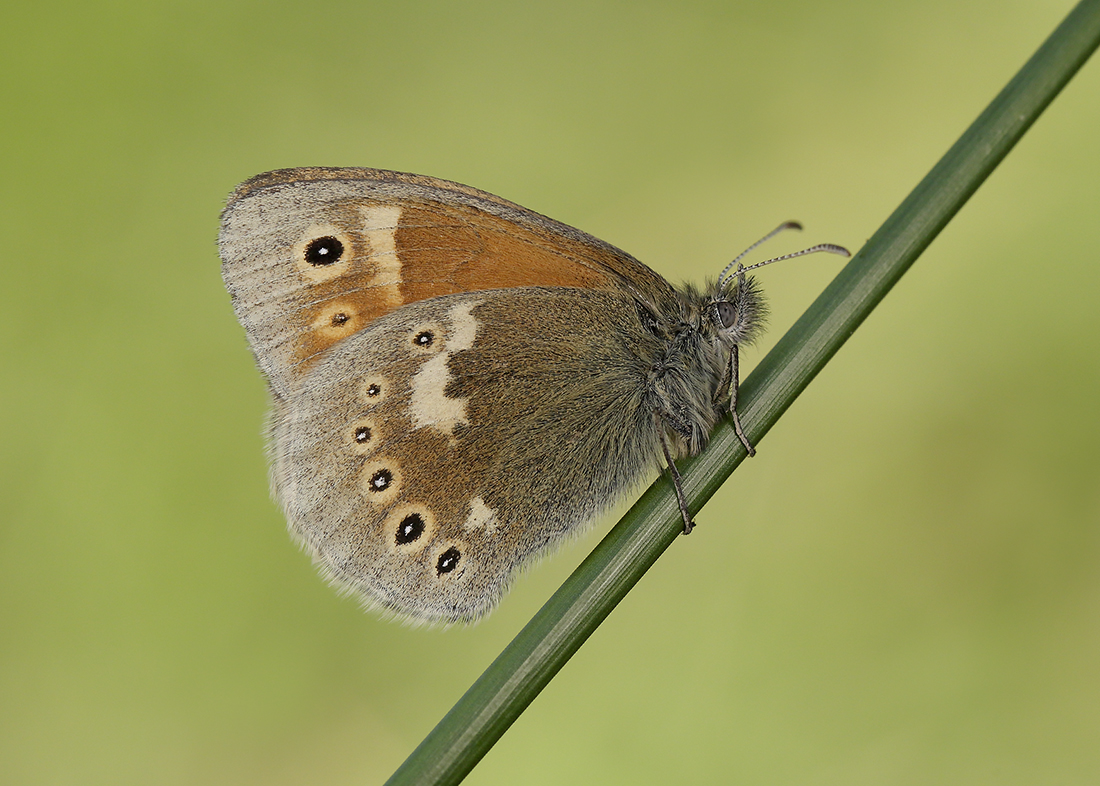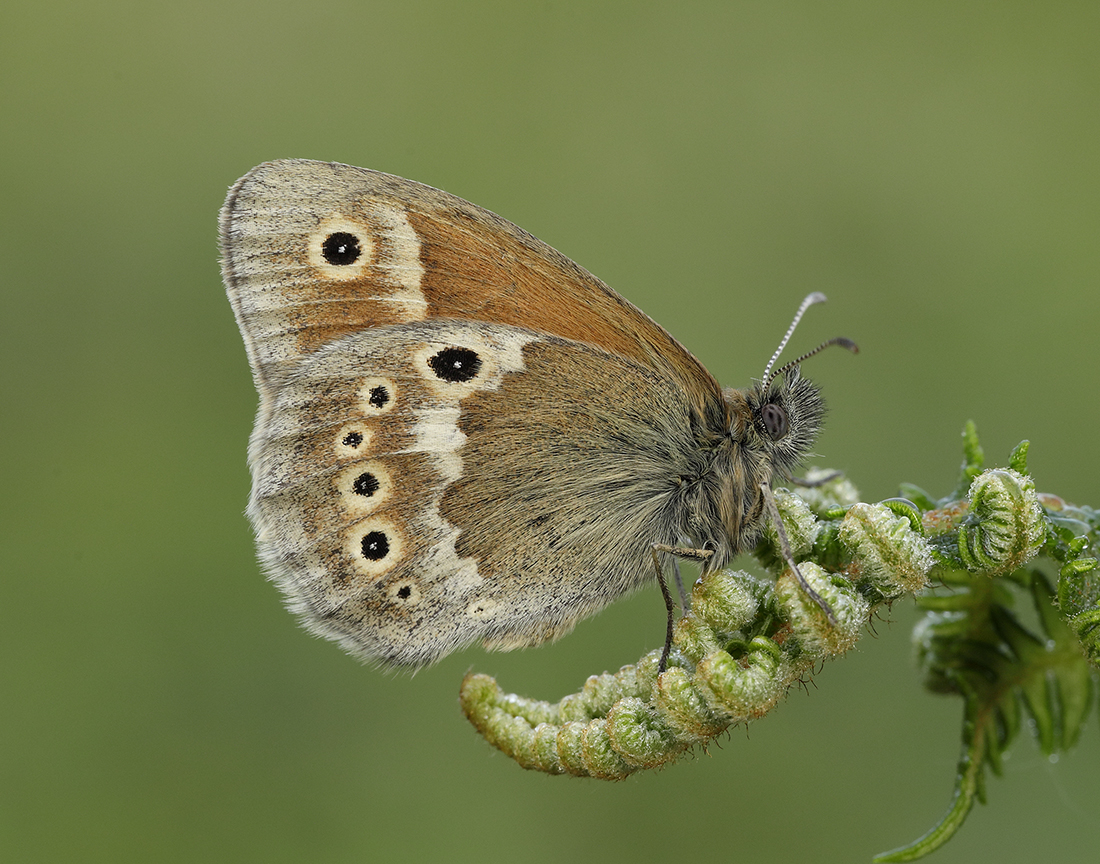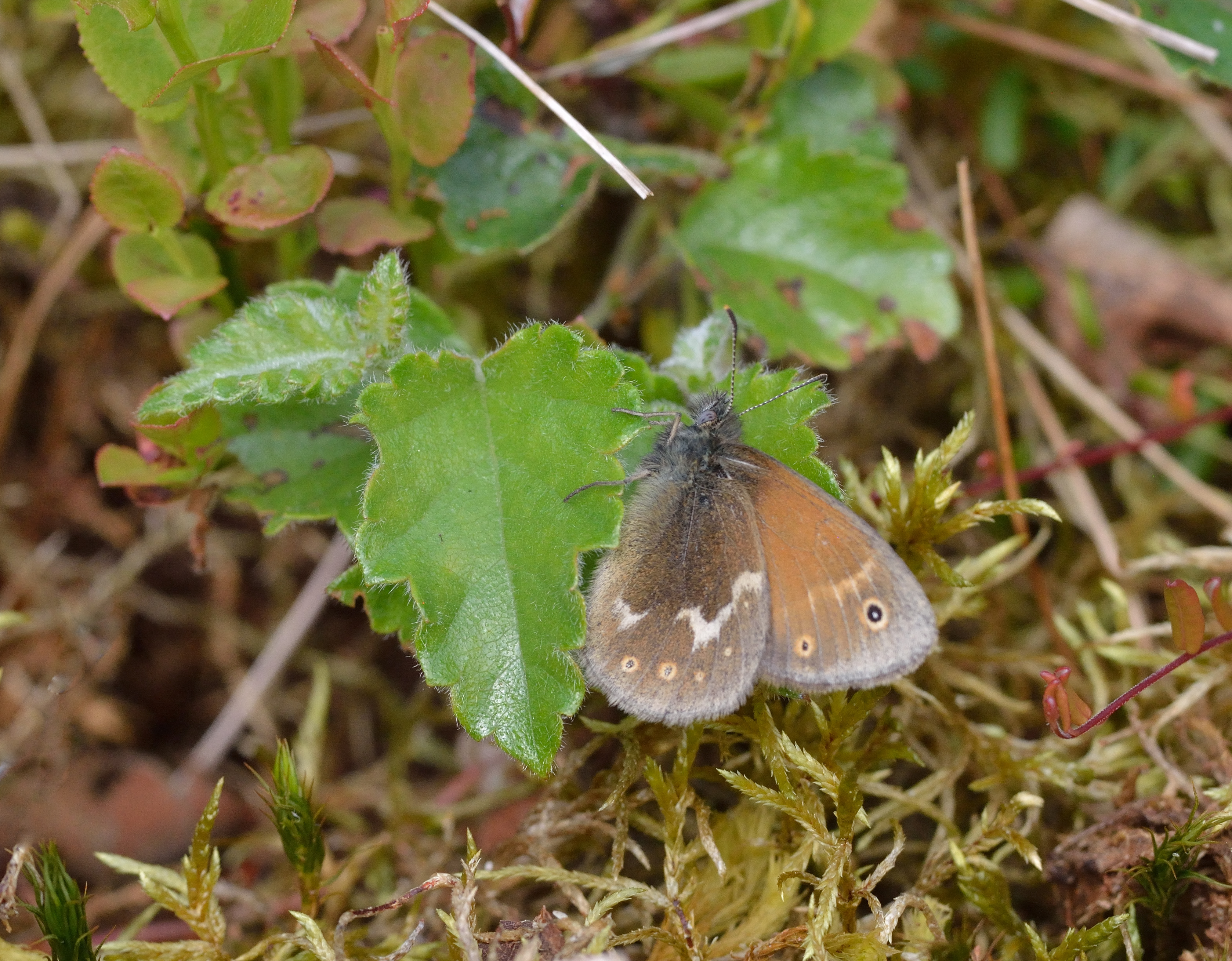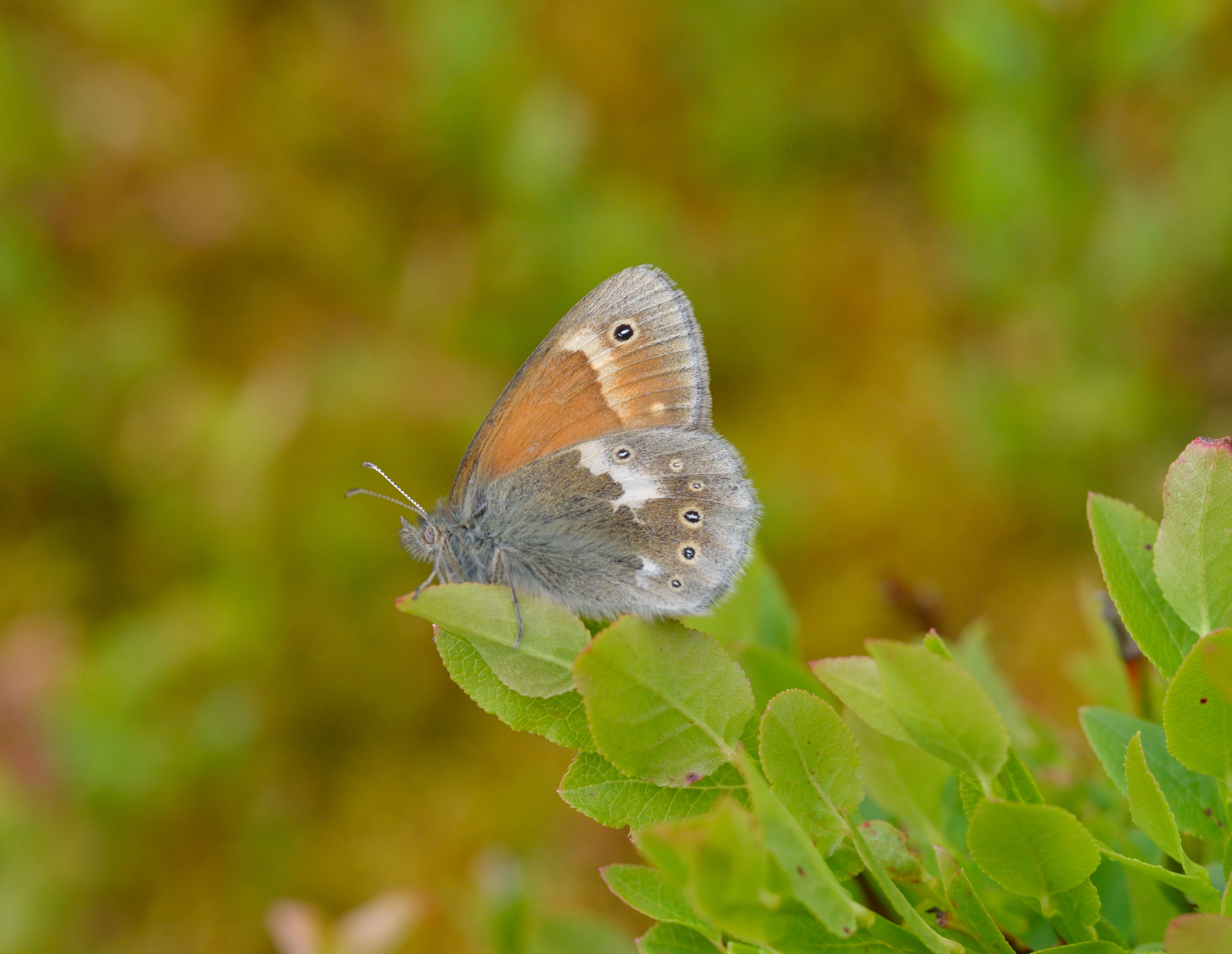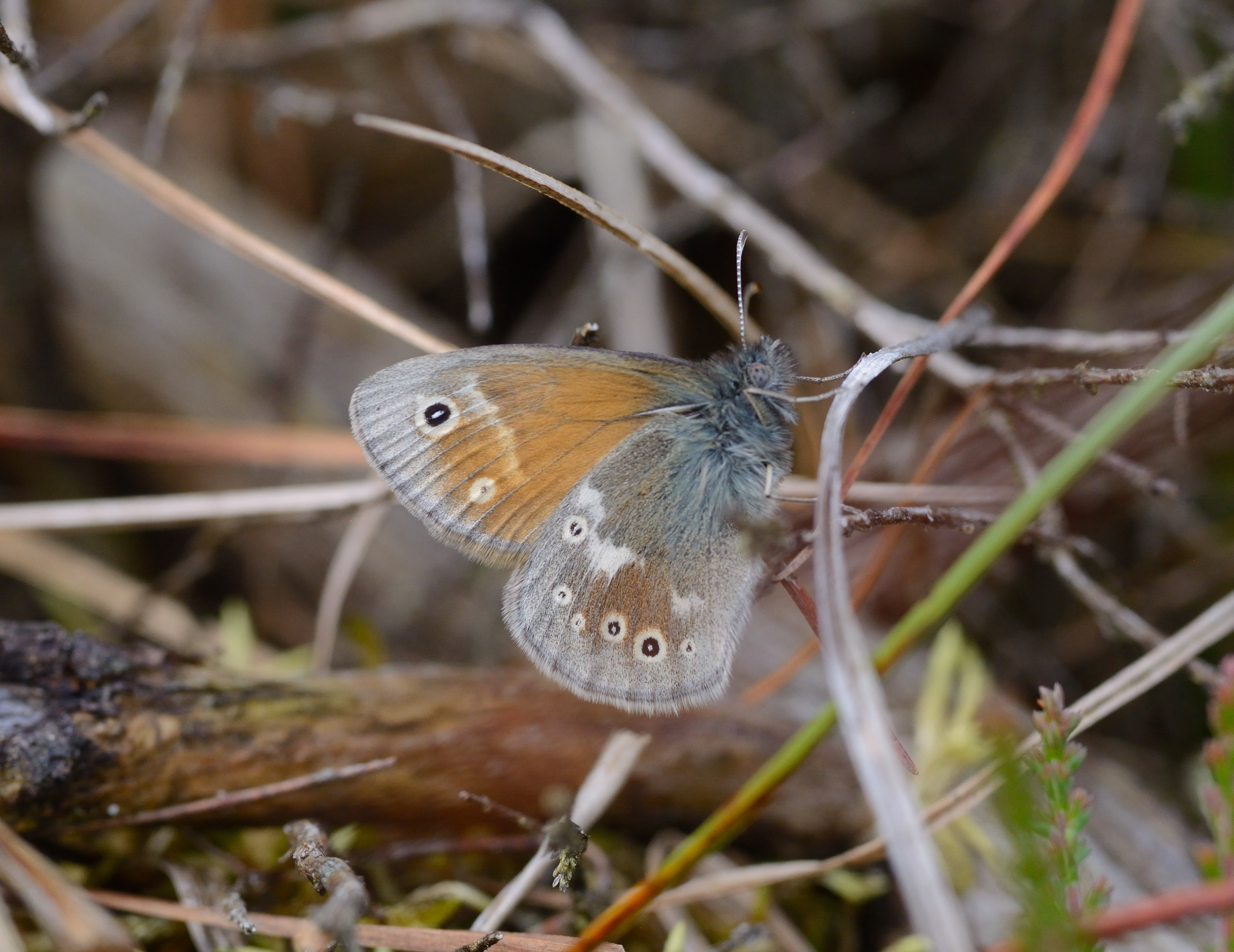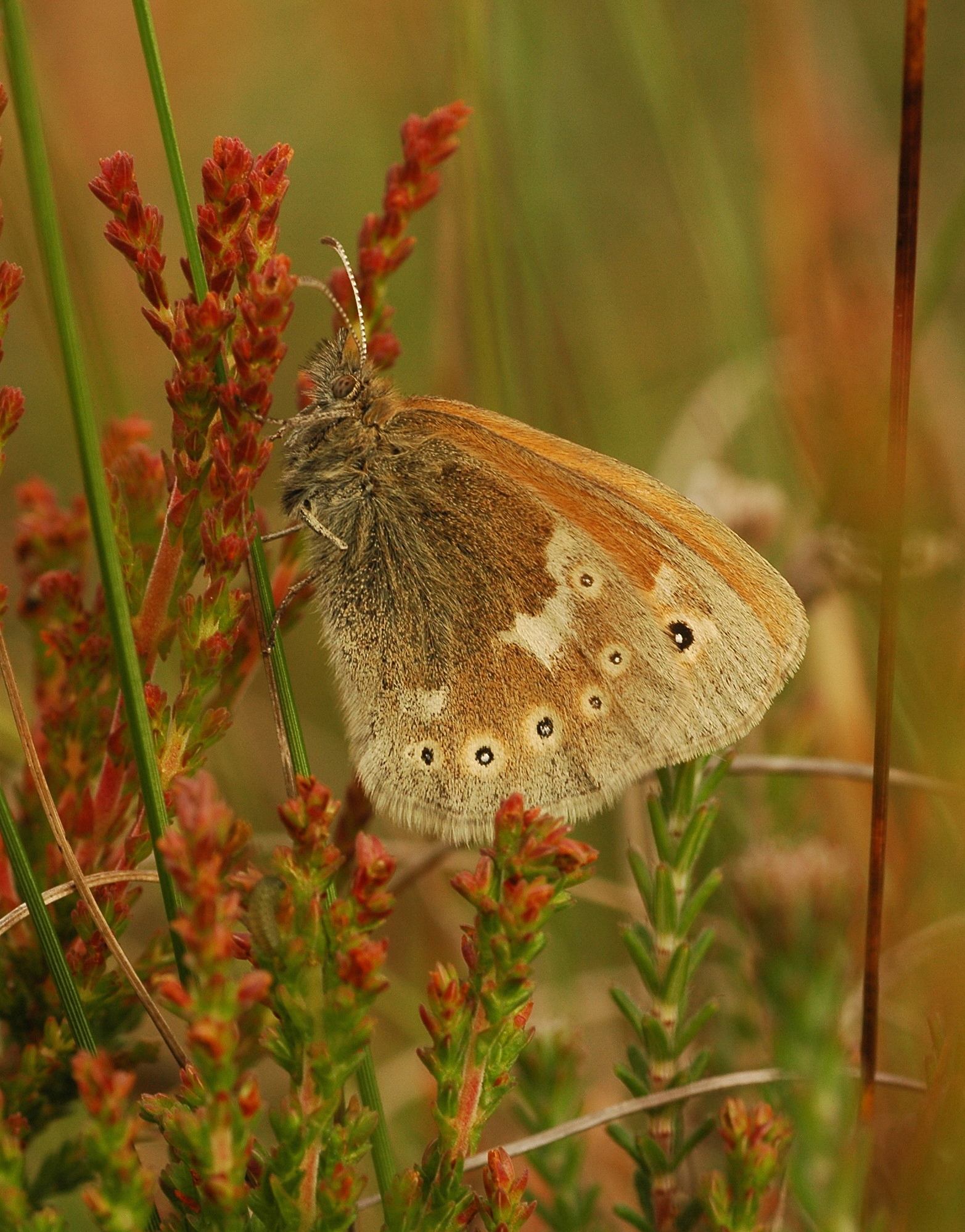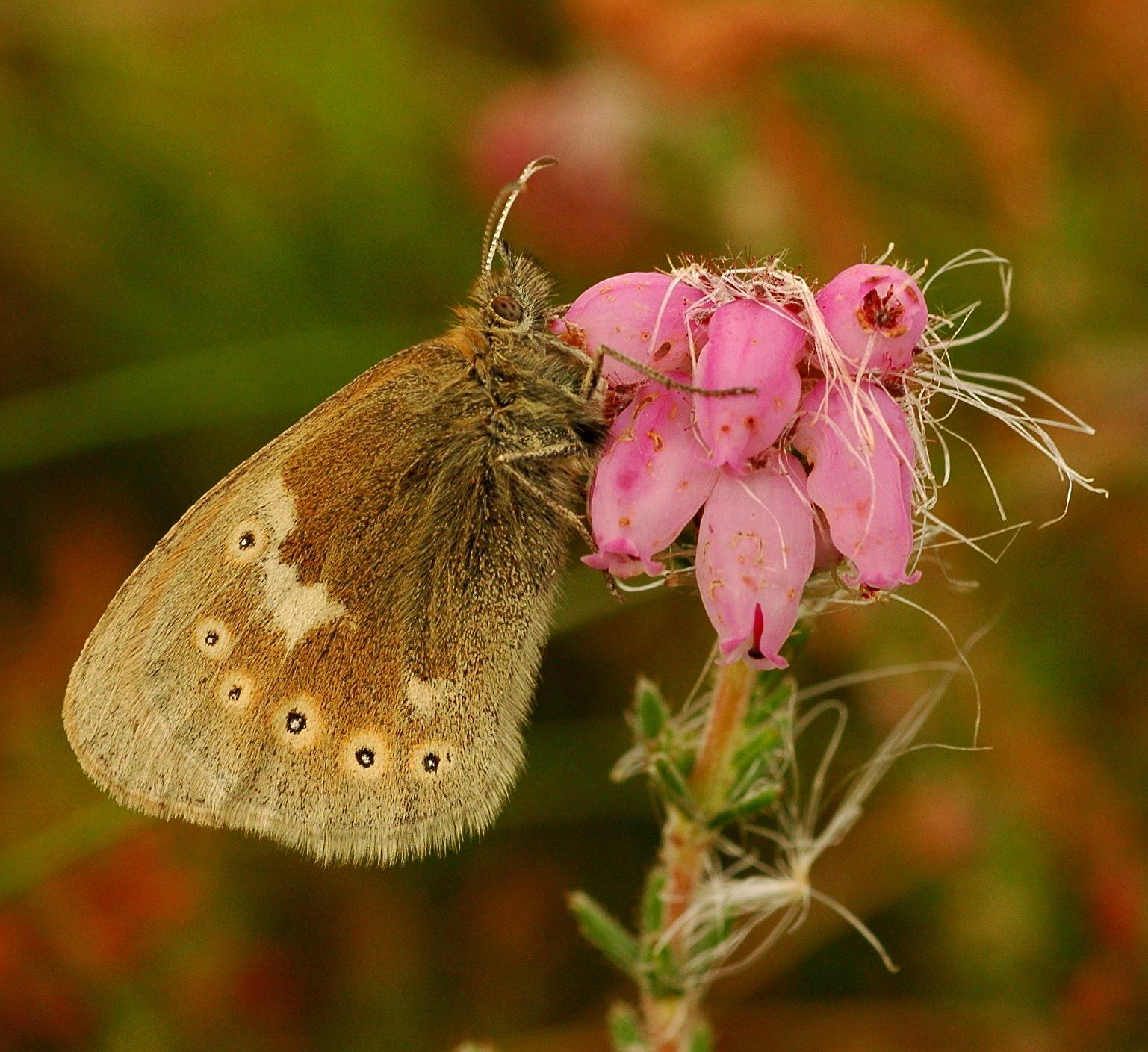The distribution map for the Large Heath shows far fewer records received since 2015 implying a loss of colonies across the county. This is reflected in other parts of Scotland, and indeed Europe. Both climate change and habitat loss have been suggested as causes. However, the nature of the Large Heath’s habitat, inclement weather on its upland sites, and its reluctance to fly on days without full sun mean that under-recording may be giving a misleading view.
Identification
It might not be Scotland’s most colourful butterfly, but it is one of the most fascinating, and it lives in extraordinary places. Warm sunshine is needed for flight and the butterfly can prove very hard to find in dull weather.
The Large Heath is similar to the Small Heath in appearance but in this region can usually be distinguished by its larger size, duller gun metal grey colour and prominent eye spots. Other useful characteristics are the pale bar on the underside of the forewing and the shape of the white streak on the underside of the hindwing. The Large and Small Heath both always rest with their wings closed.
The amount of spotting on the underside varies considerably, and in general, those found on the upland blanket bogs of the north of Scotland have few eye spots and are called ‘scotica’, while those on lowland bogs in the south have more eye spots and are called ‘polydama’. Large Heaths tend to have even bigger eye spots in Wales and England where they are called ‘davus’.
Life cycle & flight period
The Large Heath flies from early June, and in warm years may be finished by mid-July. It has one generation a year, and overwinters as a caterpillar.
Larval foodplant
Large Heath caterpillars are thought to feed primarily on Hare’s-tail Cottongrass, but they have been found feeding on Common Cottongrass on wet moorland. As this plant often occurs on peatlands together with Hare’s-tail Cottongrass, it could also be a regular foodplant.
Habitats
The Large Heath is a true peatland specialist, found only on bogs or wet moorland with plenty of cottongrass. There are surprisingly few records from the Southern Uplands, and most recent records are from bogs, such as Carsegowan Moss, Knowetop Lochs and Kirkconnell Flow.
On lowland bogs population densities can be high but on blanket bog and wet moorland the Large Heath is usually much less abundant and this, coupled with the often poor upland weather, means that many colonies may exist undetected.
Nectar sources on bogs and moorland can sometimes be scarce but the adults seem to favour Cross-leaved Heath, and are seen less frequently on Ling.

